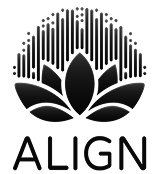Clinical Review —
Overview:
The ANS Regulation Index assesses the dynamic balance between sympathetic and parasympathetic nervous system activity. This is essential for maintaining homeostasis in response to varying physical and emotional demands.
Observed Results:
Post-intervention, the ANS Regulation Index increased by 10 percentage points, indicating a moderate enhancement in the body’s capacity to balance and switch between states of activation and rest.
Clinical Interpretation:
This reflects an improved ability to manage acute and chronic stress. A balanced ANS promotes better digestion, hormonal balance, and metabolic function, while reducing the systemic wear and tear often caused by sympathetic dominance. The moderate gains suggest foundational neuroregulatory shifts which are likely to strengthen over time.
Implications:
This data supports the use of the intervention in conditions related to autonomic dysfunction, such as adrenal fatigue, anxiety disorders, and postural orthostatic tachycardia syndrome (POTS). Clinicians should encourage stress management strategies in parallel with ongoing intervention.
Understanding the ANS Regulation Index: Your Body’s Internal Gear Shifter
Your autonomic nervous system (ANS) is the silent operator behind every heartbeat, breath, and digestive rhythm. It’s what allows your body to respond to danger with a surge of adrenaline—or settle into rest after a long day. The ANS Regulation Index is a measure of how well this system maintains balance between its two branches: the sympathetic (fight-or-flight) and parasympathetic (rest-and-digest).
When this system is working properly, you feel centered. Your energy flows steadily throughout the day, you recover quickly from stress, and you sleep deeply. But when it’s out of sync, life becomes a rollercoaster. You might feel anxious, exhausted, overwhelmed, or even numb.
A recent NeuralChek analysis showed a 10% improvement in ANS Regulation Index scores following a 20 min ALIGN mat session. While this may sound small, in the context of neurophysiology, it’s quite significant. The nervous system is slow to change, and even subtle shifts can lead to profound effects across many domains of health.
Imagine your nervous system as a gearbox. In people with healthy ANS regulation, the body can quickly shift from sympathetic to parasympathetic depending on the environment. You get nervous before a big meeting—your heart rate spikes—but then you calm down naturally. You exercise hard—your body heats up—but then cools off with ease. This fluid switching is what the ANS Regulation Index tracks.
On the other hand, poor ANS regulation is like a car stuck in one gear. You stay stressed long after the stressful event is over. You can’t wind down before bed. Your digestion is sluggish even when you’re eating right. Over time, this contributes to chronic inflammation, hormone dysfunction, cardiovascular problems, and mood disorders.
So how can you support your ANS?
Start with the basics: diaphragmatic breathing, cold therapy, grounding, PEMF technology, adequate sleep, and mindfulness meditation all support parasympathetic activation. Avoiding stimulants, reducing blue light at night, and spending time in nature also improve regulation.
The ANS Regulation Index reminds us that the path to health isn’t always about doing more—it’s about learning to shift. To respond when needed, but return to calm. To flex and flow, rather than freeze or collapse.
When your ANS is resilient, so are you. It’s the master regulator of your body, and optimizing it may be the single most powerful upgrade you can make for your health and longevity.






